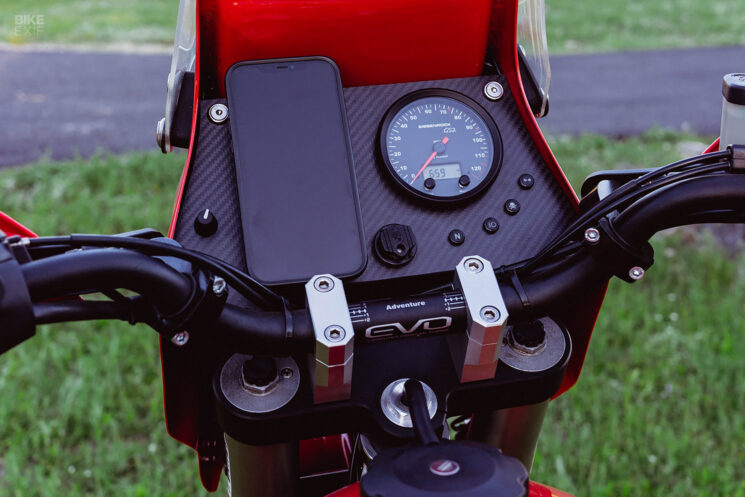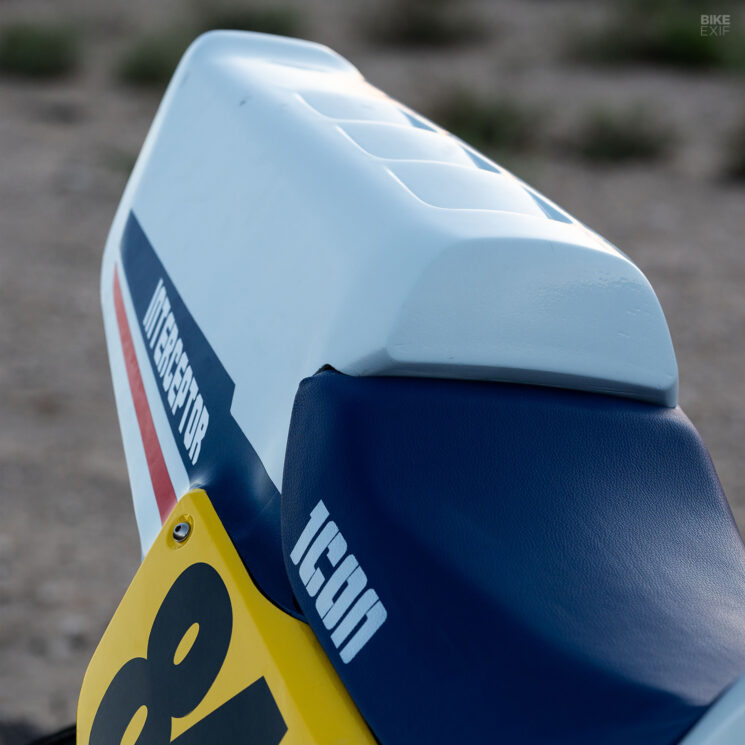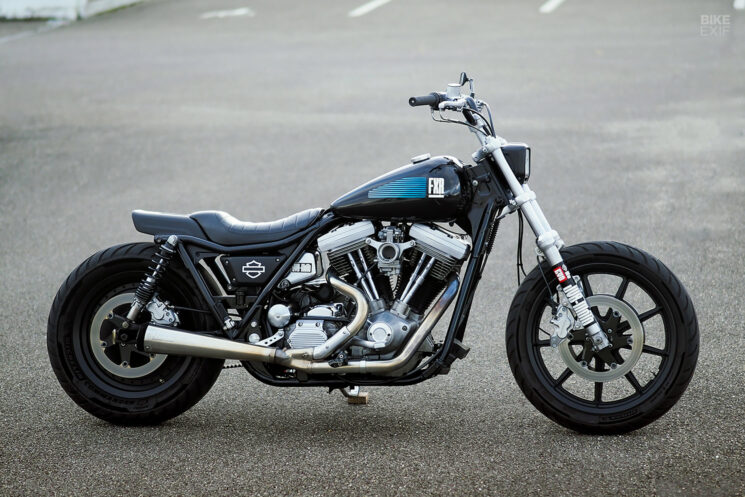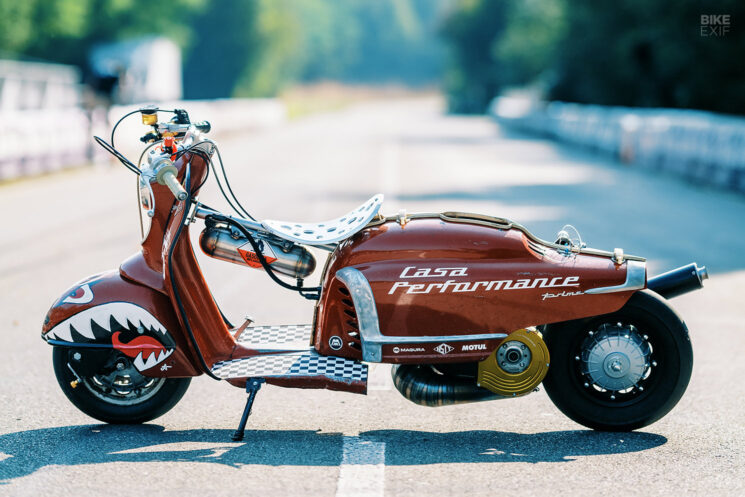
The new BMW F900GS has only just hit the scene, and VTR Customs has already got their grubby paws on it. Other highlights this week include a Rotax framer from the UK, a BMW R100GS rally replica from the US, and a look at Biltwell Inc.’s new collaboration with Santa Cruz Skateboards.

BMW F900GS by VTR Customs If you’ve ridden the new BMW F900GS, you’ll know it’s a marked improvement over its predecessor. Gunning for rivals like the Yamaha T7 and Triumph Tiger 900, BMW has not only given their middleweight adventure bike more power, but it now has bonafide off-road chops too—with looks to match.
It’s still not wild enough for the crew at VTR Customs though (although, to be fair, few bikes are). The Swiss crew loves to take BMWs, old and new, and crank them up to eleven. For this round, they’ve given the BMW F900GS a louder livery, and a handful of tasteful mods to tighten it up.

Since VTR Customs is the custom arm of a popular BMW dealer, the bike sports several BMW parts too. These would be the tinted windscreen, billet brake and clutch levers, hand guards, and the sporty rally-style solo saddle.
All the OEM frou-frou behind the seat is gone, replaced by a prototype tail tidy arrangement that holds the license plate, a slim taillight, and a pair of tiny Kellermann turn signals.

With no need to swap out the BMW’s fully adjustable suspension, Brembo brakes, or tubeless laced rims, the only performance upgrade is a burly SC-Project exhaust. VTR coated it black, then blacked out the frame and most of the bike’s hard parts.
There’s not a heck of a lot of fat to trim on the new F900GS, but VTR has done well to cut it down where they can. It’s also only the first F900GS that we’ve seen from them—so we’re looking forward to seeing how far they can push what is currently one of our favorite adventure bikes. [VTR Customs]
![]()
Rotax framer by Partridge Design Anthony Partridge has had his fingers in many pies over the years—including a stint in reality TV as part of Discovery Channel’s Goblin Works Garage. But, as we all know, there’s not much reality in reality TV. Part of hosting Goblin Works Garage meant outsourcing certain jobs in order to make deadlines while filming; something that has never sat well with Ant.
This Rotax flat tracker was one such contentious project. Ant was building it on the show for his friend and retired British motorcycle racer, James Haydon, but had to scrap the project thanks to shoddy work by a third party. Not wanting to let the bike go though, Ant eventually rebuilt it from the ground up and kept it for himself.
![]()
The bike was originally a third-hand flat track race bike with a chromoly frame from Knight Racing, powered by a single-cylinder Rotax motor. Years of being ridden in anger meant that the chassis was in need of a refresh, so Ant repaired and reinforced it, and built a new swingarm with aluminum extrusions from Metmachex Swingarms. The frame was powder-coated black, and the swingarm and myriad other parts were treated to a grey Cerakote finish.
![]()
Next, Ant fitted Öhlins suspension components at both ends, plus a Brembo caliper on a custom mount, gripping a Galfer disc, on the back wheel. Sudo Cycles pitched in with a pair of unique billet fork guards, along with the carbon fiber sprocket and chain covers.
The engine didn’t go untouched either. Sportax Racing rebuilt it with an Omega piston and a reworked head, courtesy of Racetechnics. It’s been bumped up to 640 cc, and runs with an upgraded cam, a hydraulic clutch, and a 44 mm Mikuni carb, for a thumping output of 60 hp.
![]()
Co-Built Fabrication created the stainless steel exhaust, while the tank, saddle, and side covers are Ant’s handiwork. The seat uses an alloy base with six layers of cut-up yoga mats, and was upholstered by Air-Cooled Upholstery. As for the carbon side covers, those were made from salvaged panels from one of Ken Block’s Ford Fiesta rally cars.
Goblin Works co-host Helen Stanley laid down the illustrations on the fuel tank, echoing the accents on the Neken Jared Mees flat-track handlebars and Alpina rims. [Source]

BMW R100GS by Tyson Carver Like many custom builders, Tyson Carver’s foray into building custom bikes originally started as a hobby. But word spread, and pretty soon he was taking on client work. After an eight-year stint only building bikes for others, the yearning to work on a personal project had reached a fever pitch—so when the opportunity to snap up this 1989-model BMW R100GS came along, he jumped.
The bike had been bought by a friend some time ago, sporting an Acerbis fuel tank, a rudimentary dash, and signs of abuse. Over the course of five years, Tyson’s friend had had the bike worked on by two different shops. He had got as far as having the engine, transmission, and final drive rebuilt, and the frame powder-coated in BMW’s classic Alpine White.

Forward progress had stalled, and so the bike ended up at Tyson’s workshop to get it over the finish line. A few days later though, his friend asked him if he wanted to buy the bike instead. With a head full of ideas, Tyson said “Yes.”
The bike now rides on fully custom suspension; an Öhlins shock sits out back, while re-valved WP Suspension forks from a KTM 450 prop up the front. There’s also a KTM hub up front, laced to an Excel rim with Buchanan spokes. A Brembo caliper grabs a Galfer disc, while a quick-pull axle holds the wheel in place.

The yokes and risers come from Myth Motor, the fairing is from SWT-Sports, and the front fender is a new-old-stock Acerbis part from the 80s. Tyson fabricated a mount to house a KC Lights headlight in the fairing, and added a custom carbon fiber dashboard panel. It’s kitted with a Siebenrock gauge, the stock ignition, custom warning lights, and a cleverly integrated Quad Lock smartphone mount, complete with a vibration dampener (hidden behind the dash) and a wireless charger.
There’s also a small knob to adjust the low-beam brightness of the spotlights that Tyson’s mounted to the crash bars. Other upgrades include ProTaper bars, trimmed Acerbis hand guards, and Doubletake mirrors.

Rebuilding the BMW R100 engine wasn’t originally on the cards—until Tyson rode the bike and realized that all was not well. So he bought a new engine block from a local BMW expert and set to work swapping everything over. A smorgasbord of new Siebenrock parts, including a clutch assembly, pistons, wrist pins, and conrods, were all balanced and installed.
There’s also an upgraded SWT-Sports airbox, a Siebenrock exhaust system, and a Silent Hektik charging system. Finally, Tyson rewired the bike with an NWT ‘brain’ and an Antigravity battery.

Moving to the frame, Tyson took a stock R100GS subframe, trimmed it by 9.5 inches, and added a mix of custom and repurposed BMW luggage racks. The bike can now be fitted with classic BMW plastic cases, aluminum panniers, or soft luggage. An Acerbis fender sits out back.
Tyson also fitted a modified R80G/S seat, lengthened the factory center stand and aftermarket side stand, and re-laced the rear wheel to fresh Buchanan’s spokes. Ballin Customz covered the seat with fresh vinyl, while Leech Custom Cycles handled the throwback Paris-Dakar paint job. Tyson’s BMW R100GS treads familiar ground, visually, but it’s rare that you see a retro rally replica built to such an exacting standard. [Tyson Carver Instagram | Images by Anna Carver]

Biltwell Inc. x Santa Cruz Skateboards Gringo For many of us, skateboarding and motorcycling go together like mac and cheese. To celebrate this, Biltwell has released a limited edition of their super-popular Gringo helmet, featuring what is arguably the most iconic skate logo of all time.
Emblazoned on the side of the gloss vintage white Gringo is Santa Cruz’s ‘Screaming Hand’ graphic. First created in 1985 by Jim Phillips (who was also responsible for Santa Cruz’s ‘dot’ logo), the Screaming Hand has been in constant use since, proving its timelessness. So it’s been burned into the collective consciousness of our friends at Biltwell.

For this limited collaboration, Biltwell has paired the Santa Cruz graphic with their full-face, visor-less Gringo helmet. It’s a no-nonsense helmet with a classic design, using an ABS outer shell, a dual-density internal shell, and a molded urethane chin bar. The interior uses ventilated padding with fleece lycra pads, balancing comfort and breathability.
Going for $274.95 ($50 more than a ‘plain’ model), the Biltwell Inc. x Santa Cruz Gringo is DOT and ECE 22.06 compliant. It’s also on its way to me right now; as a semi-reformed skate rat, I couldn’t be giddier. [More]

from Bike EXIF https://ift.tt/rYlVAvZ































